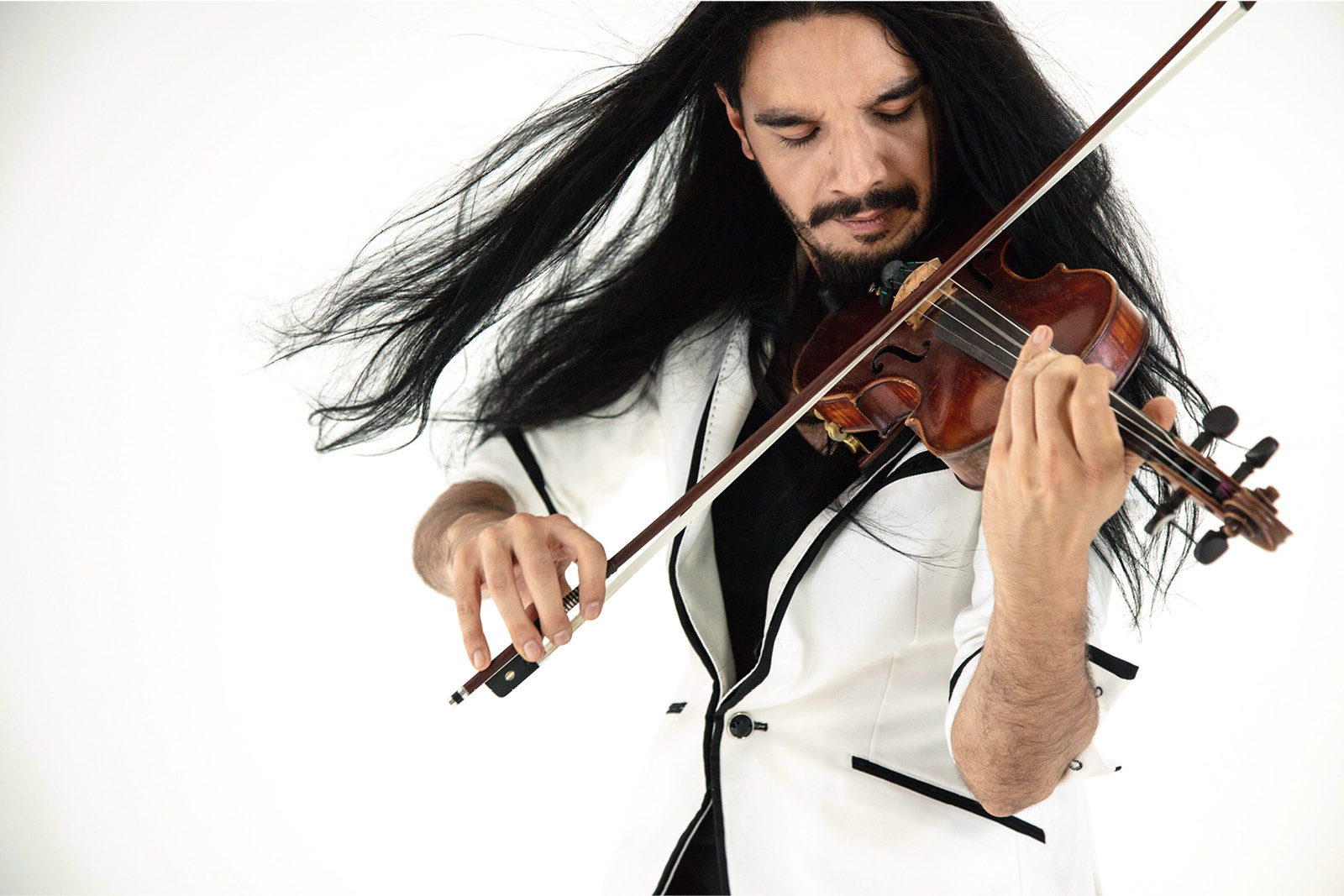Nemanja Radulović is a Franco-Serbian violinist on the international scene. (He has a recording contract with Deutsche Grammophon which has produced among other things the best Khachaturian Violin Concerto since Leonid Kogan.) Radulović is quite a presence on stage. He has long, black, leonine hair, and with his pointed beard, thick boots and a dark, braid tailcoat he presents a Mephistophelean figure.
 Nemanja Radulović. Photo © Lukas Rotter / DG
Nemanja Radulović. Photo © Lukas Rotter / DG
Ensemble Liaison is a chamber ensemble based in Melbourne, comprised of clarinettist David Griffiths, cellist Svetlana Bogosavljevic, and pianist Timothy Young. While less exotically attired, their standard of musicianship and commitment is equally high and their ensemble impeccable. I first heard them play last year at the Albury Chamber Music Festival, and was mightily impressed at the time. During this concert, each of these four excellent musicians had his or her showcase moment. Like a great string quartet, all were first among equals.
Bach opened the proceedings: an arrangement by Griffiths of the Sonata for flute and continuo, BWV 1034. Bach can take any kind of rejigging and survive, and this example was particularly lovely. With Griffiths’ clarinet as the flute, and of course a grand piano rather than harpsichord, the sonata sounded ultra-Romantic. The lovely Andante was almost Schubertian, thanks in part to Young’s sensitive playing of the introduction and Griffiths’ expressive and mellow clarinet.
Radulović entered (to much applause and whistling from the Serbian contingent of the audience), and was joined by Bogosavljevic for a Passacaglia by Handel, arranged for violin and cello by the 19th-century Swedish composer Johan Halvorsen. The rapport between these two players was remarkable, a delight to watch as much as to hear.
The one piece that was not an arrangement but actually conceived for clarinet, violin and piano was Aram Khachaturian’s Trio. An early work from 1932, it is the composer’s masterpiece in the chamber music genre. The performers made the most of Khachaturian’s sinuous melodic lines, inflected with the twists and turns of Armenian folk music. It was a beautifully fluid performance, more so than that of the Melos Ensemble on their old EMI recording, where I first learned to love this work. The Melos now sound rather foursquare and, well, English. (Incidentally, Radulović has recorded this Trio on the same disc as the Khachaturian concerto, with Andreas Ottensamer on clarinet.) Bartók’s Roumanian Dances, Sz. 66 wound up the first half, and the foursome took the composer at his word in the concluding Fast Dance. It was as heart-stopping as a ride on a rollercoaster.
The second half of the concert featured the Piano Quartet No 1, Op. 25, by Brahms, in an arrangement again by Griffiths where he substituted clarinet for viola. There is reverse precedent for this: Brahms’ late Clarinet Sonatas are often played on viola, and the early Piano Quartet was once orchestrated by none other than Arnold Schoenberg (who made a feature of a very un-Brahmsian instrument in the “Gypsy” finale: the xylophone). There was nothing flashy or inappropriate in this version: Radulović toned down his stage persona to give a sensitively moulded and nuanced reading of the violin part, while Griffiths’ clarinet blended in seamlessly. Young showed himself to be a first class Brahmsian, able to project important melodic lines cleanly through the texture and support the other instruments with perfectly weighted precision. His playing could be incisive or melting, and everything in between, even at high speed. The quartet’s control in that dizzy final movement had the audience on the edge of their seats. We were then treated to a dazzling encore rendition of Vittorio Monti’s Czárdás. A memorable concert.











Comments
Log in to join the conversation.